As an early childhood educator, have you ever noticed a child endlessly filling containers or obsessively lining up objects? These behaviours likely reflect "schemas" - patterns of repeated actions that reveal how a child engages with the world.
Understanding and supporting play schemas can transform your teaching by providing unique windows into each child's strengths, interests, and approaches to learning.
Understanding Recurring Patterns Of Play In Early Childhood
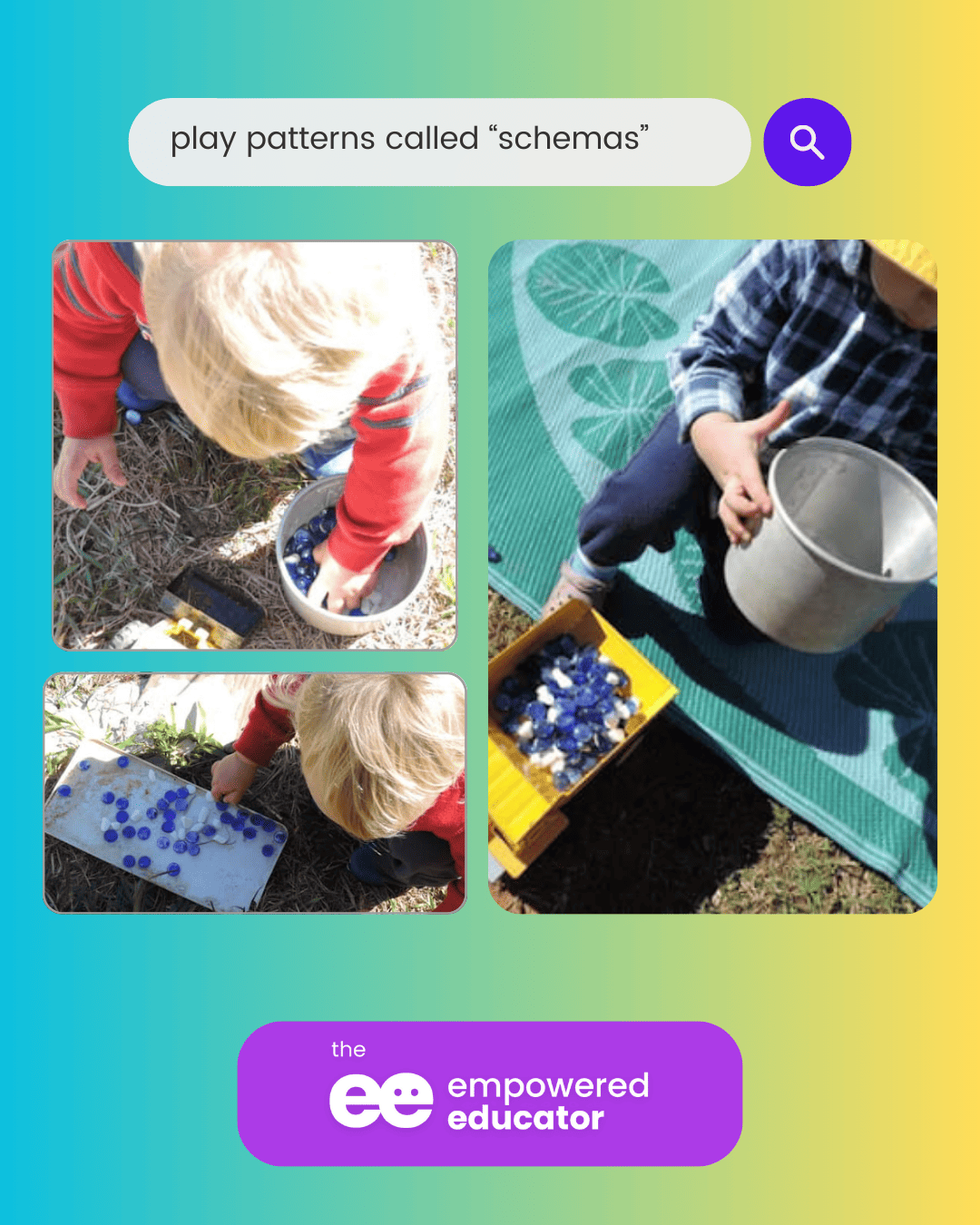
When we understand how to tune into play patterns called “schemas,” we can uncover the meaning behind behaviours and tailor learning to speak to each child’s unique interests and strengths.
In this beginner's guide, we'll explore what schemas are, why they matter, and how to use them to support and extend learning through play.
What Are Schemas and Why Do They Matter?
Quite simply, Schemas are patterns of behaviour that reflect a child’s interest in exploring an idea or concept.
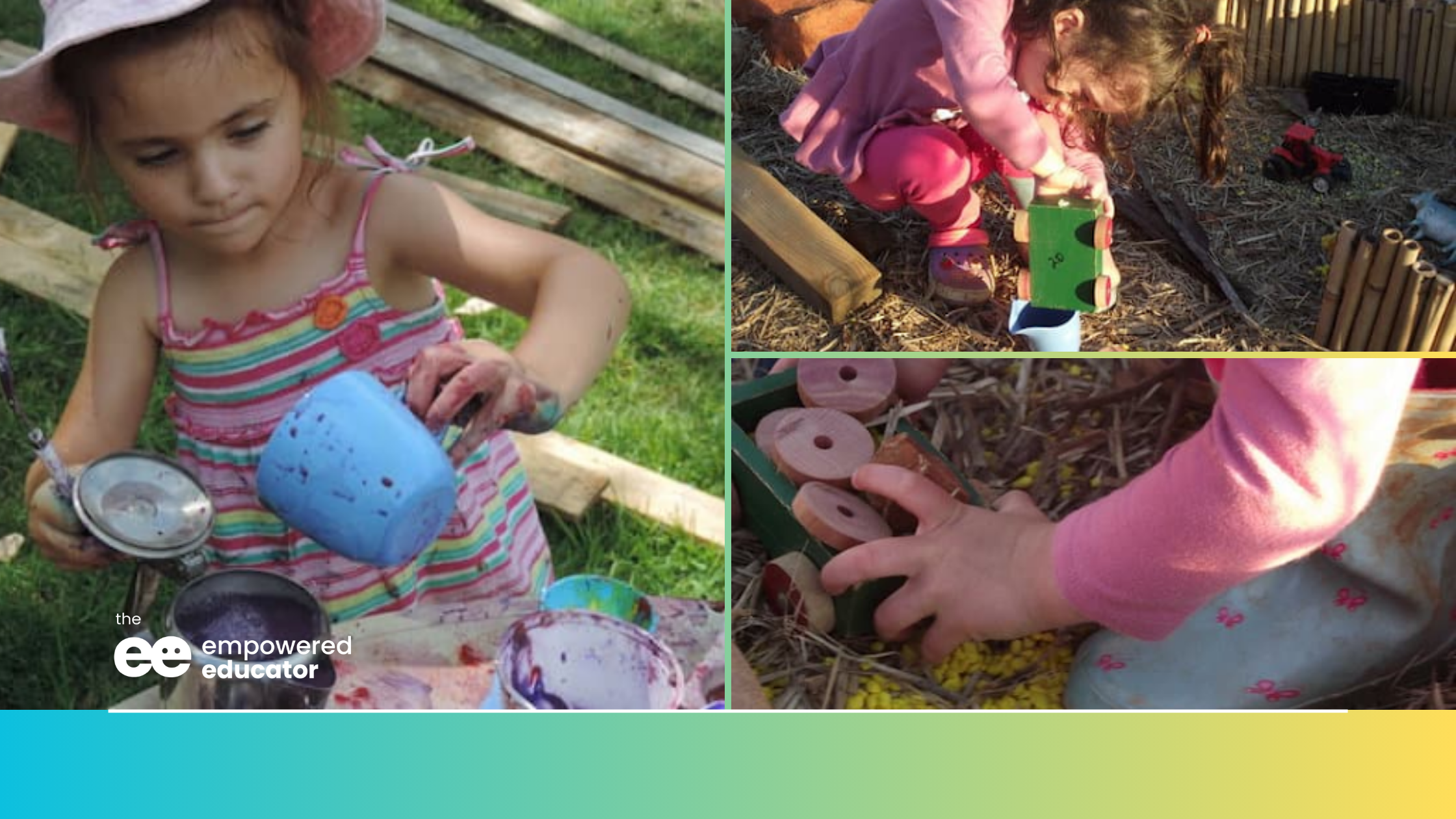
For example:

jodie clarke - the empowered educator
These recurring actions illuminate schemas - categories of thought driving a child’s play.
It can help to think of schemas as play patterns - the 'language' young children use to express their thoughts, ideas, and understanding of the world around them. These patterns or 'schemas' are recurring behaviours that are unique to each child, yet share common themes across all children.
Whether it's a fascination with lining up toy cars or an obsession with pouring water from one container to another, these are all play patterns - a child's way of exploring, learning, and making sense of their world.
The Role and Significance of Play Patterns in Early Education
Play patterns are not just about keeping children busy. They're an integral part of childhood development. When children engage in these behaviours, they're testing theories, learning cause and effect, and developing foundational skills that are crucial for their later learning.
Understanding these patterns allows us, as early childhood educators, to 'speak' the same language as the children, helping us connect with them on a deeper level.
The Importance of Understanding Play Patterns in Early Childhood Education
Why should we, as educators, understand these patterns? Because they provide a window into a child's mind.
They help us understand what a child is interested in, how they're thinking, and what skills they're developing. This knowledge is invaluable when planning learning experiences, as it allows us to tailor our teaching to support each child's unique learning journey.
The Benefits of Supporting Play Patterns in Early Learning Settings
When you provide opportunities for children to explore their play patterns in your early learning setting, you're doing more than just setting up an activity. You're creating a rich, engaging environment where children feel understood and supported in their learning.
Let's take the example of a child who shows interest in the 'connecting' schema. They might spend their time linking toy trains, sticking blocks together, or fastening and unfastening buttons on a dress-up costume.
By recognising this pattern, you can provide materials and experiences that support this interest, such as building sets, threading activities, or dressing up clothes with various fastenings.
In doing so, you're not only supporting the child's current interest, but you're also helping them develop important skills such as fine motor coordination, problem-solving, and persistence
Schemas are important because they:
By supporting schemas, we provide opportunities to develop skills such as:
- Cause and effect
- Spatial awareness
- Motor coordination
- Problem solving
- Persistence
- Creativity
- Language and social interaction
Schemas offer windows into child development that complement our knowledge of stages, milestones, and domains.
How are schemas different from developmental milestones?
This is a question I am often asked when this topic comes up in my workshops so let's clarify that for you now before we move on!
Milestones represent broad skills most children acquire by certain ages (walking, classifying objects, etc.).
Schemas reveal more nuanced insights that make each child unique - their motivations, strengths, and inclinations. Schemas operate within and across standard developmental stages and domains.
So while milestones provide overview snapshots, schemas offer focused insights to directly inform intentional teaching.
Spotlight on Schemas
There are numerous schemas ranging from positioning to transporting. Observe play closely to uncover the particular schema behaviour driving an individual child’s actions.
Let’s explore some common schema categories in more detail:
Enclosure Schema:
Children demonstrating an enclosure schema gain understanding through enclosing or containing objects. You may observe:
Enclosure play builds spatial awareness, problem-solving skills and supports emotional security.
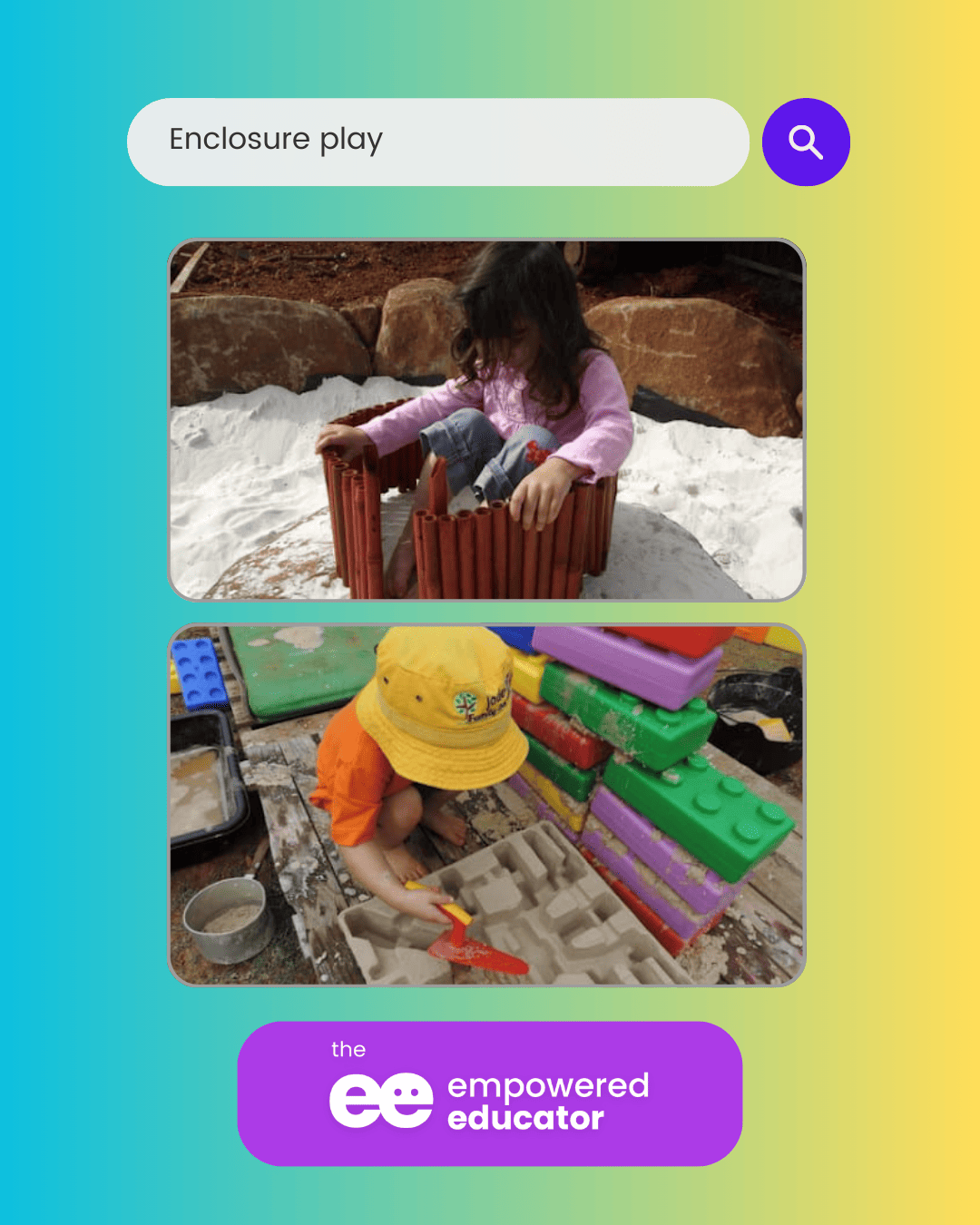
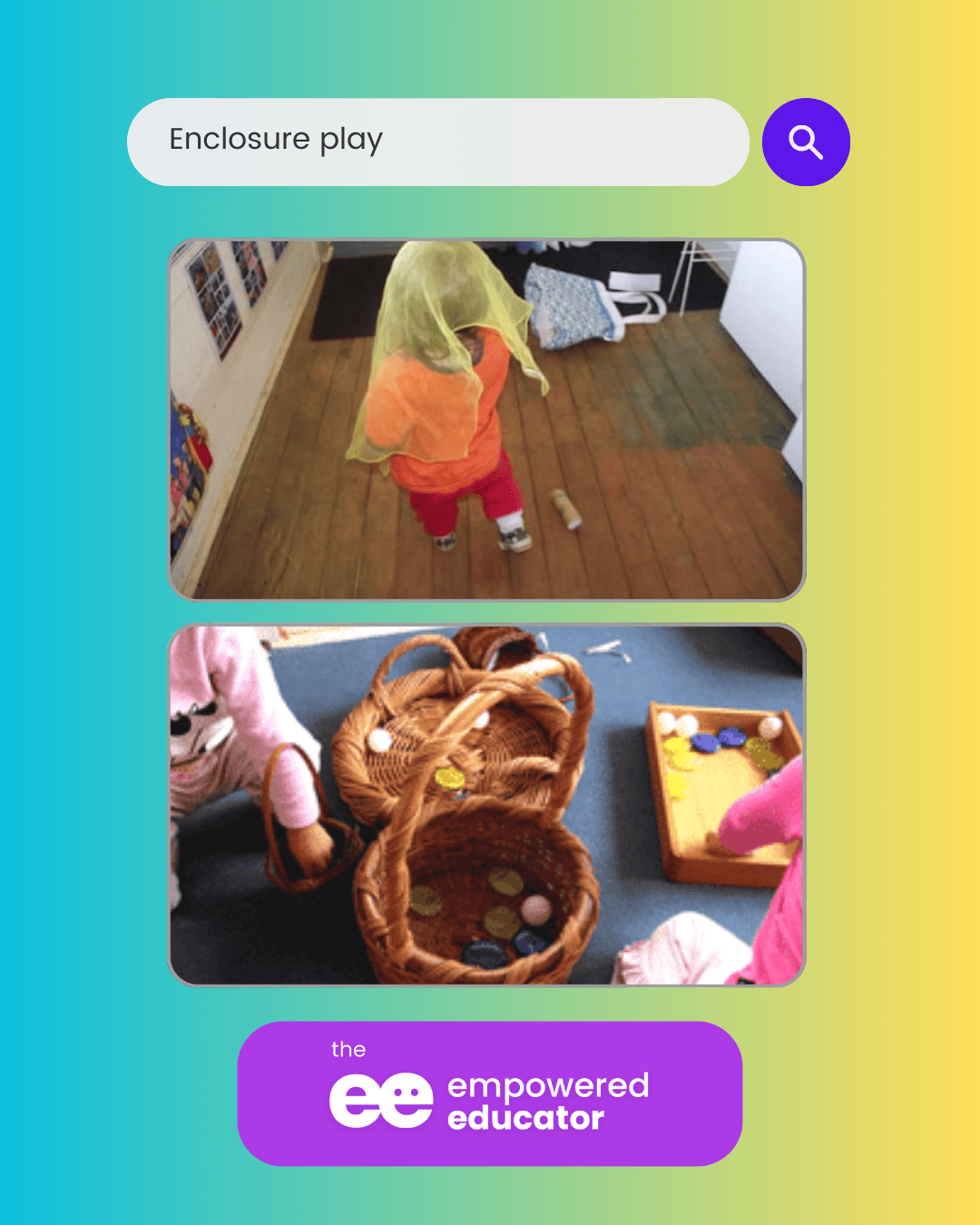
Trajectory Schema
Children intrigued by the trajectory schema experiment with motions and speeds. They may:
- Roll cars down ramps
- Toss balls
- Blow objects along a surface
- Enjoy swinging, sliding, or merry-go-rounds
Trajectory play nurtures understanding of cause-and-effect, estimation, and positional vocabulary.
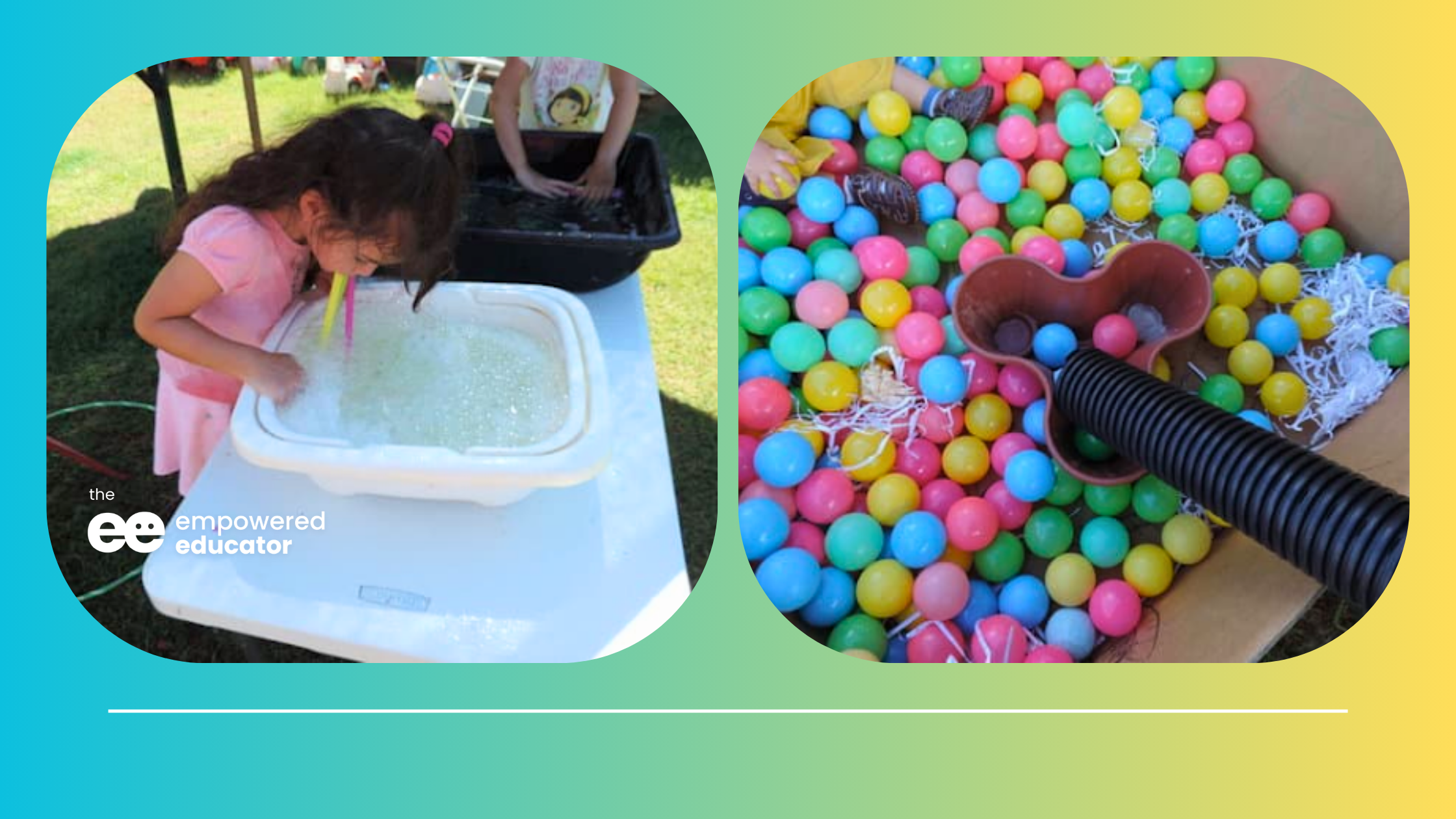
Transformation Schema:
Children motivated by transformation delight in the changes objects can undergo. Watch for:
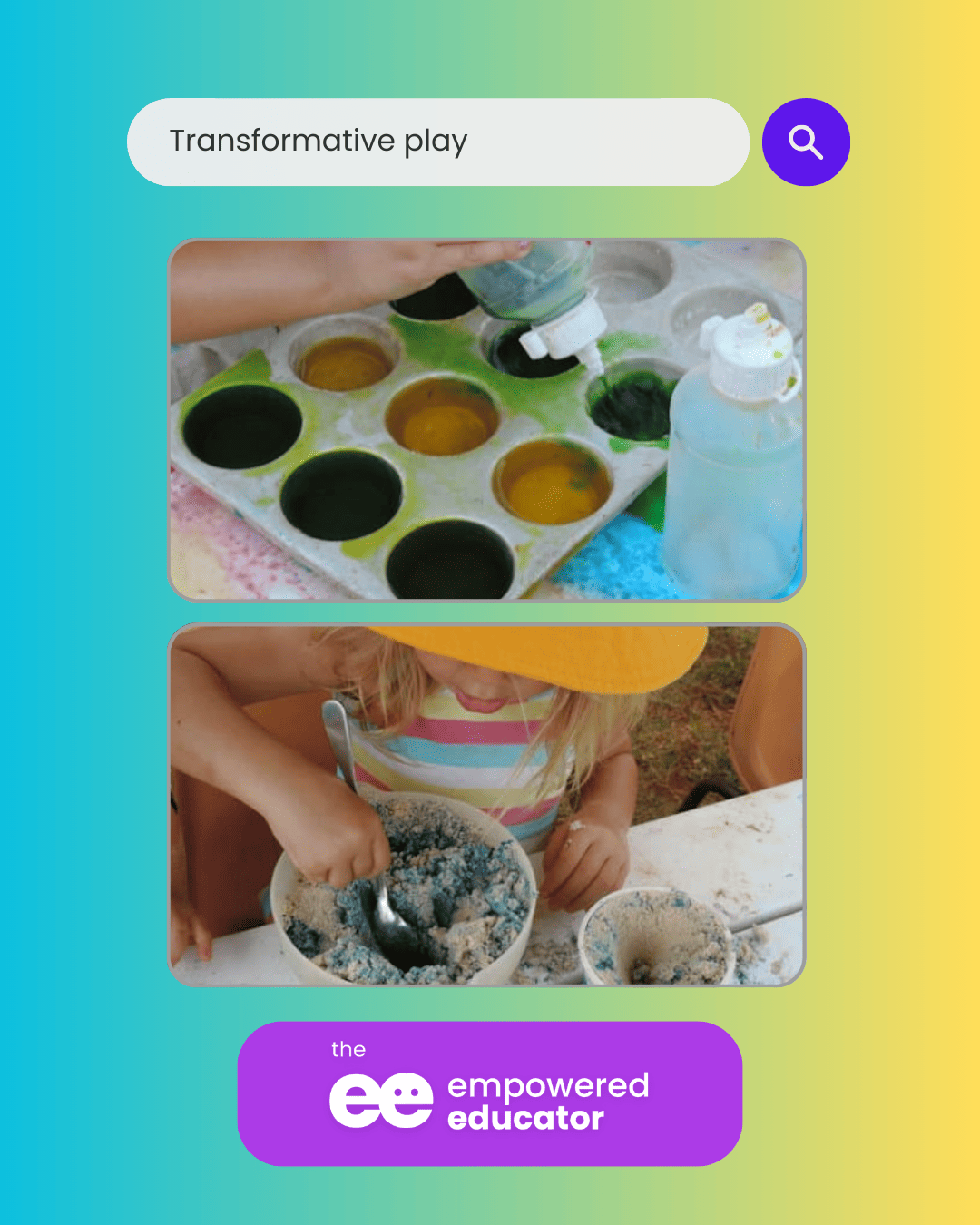
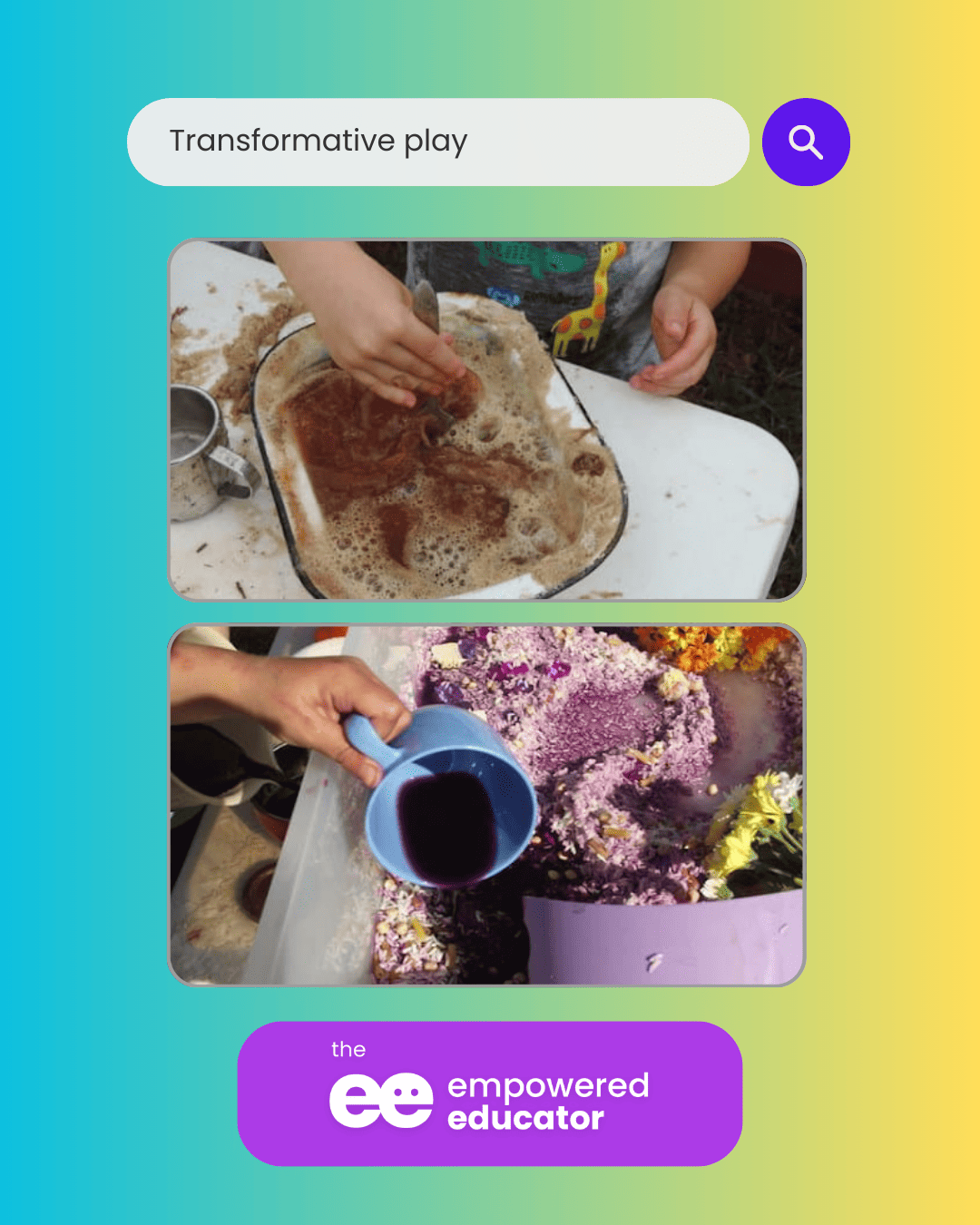
Transformative play promotes flexibility, creativity, and understanding of properties.
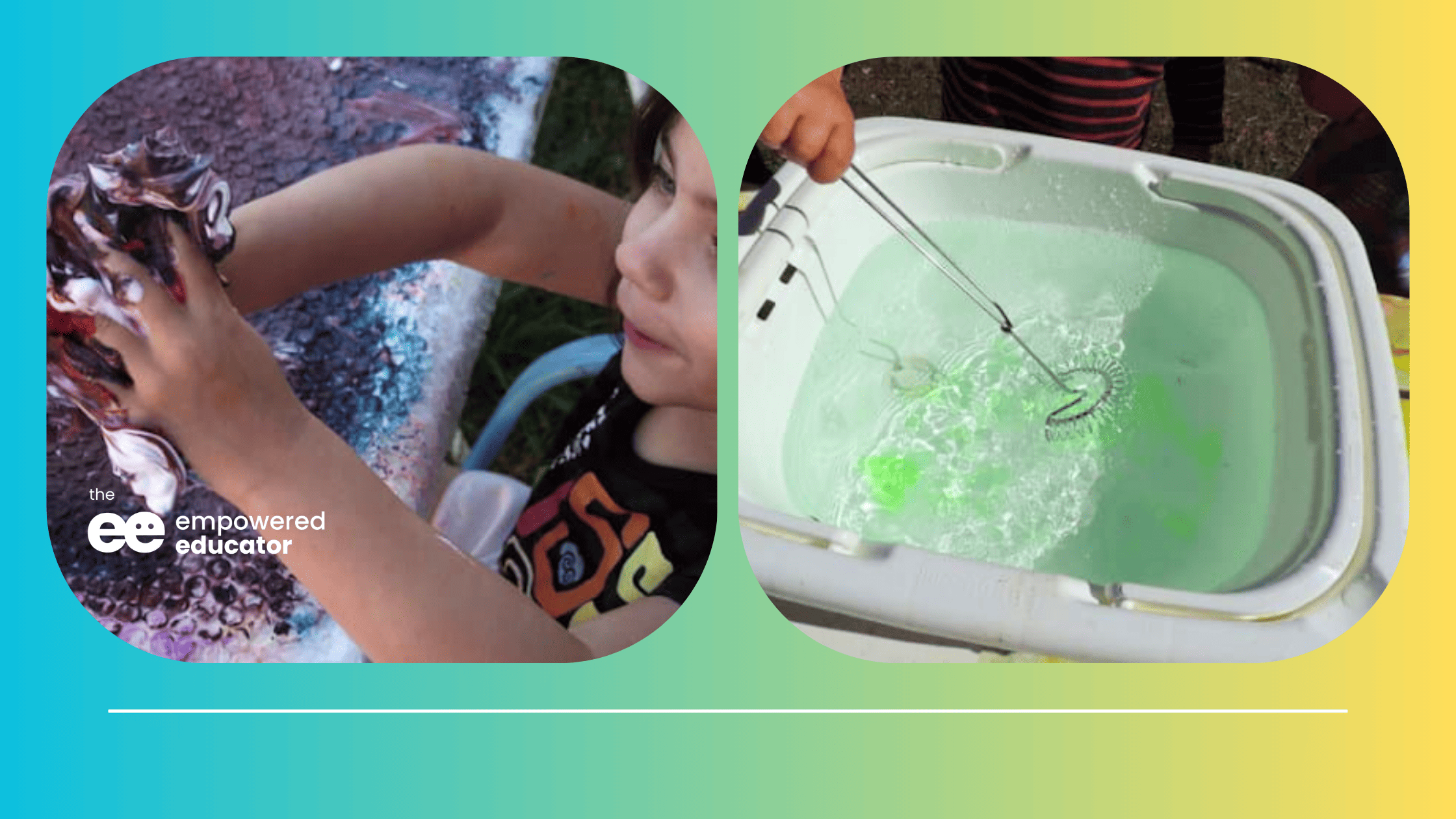
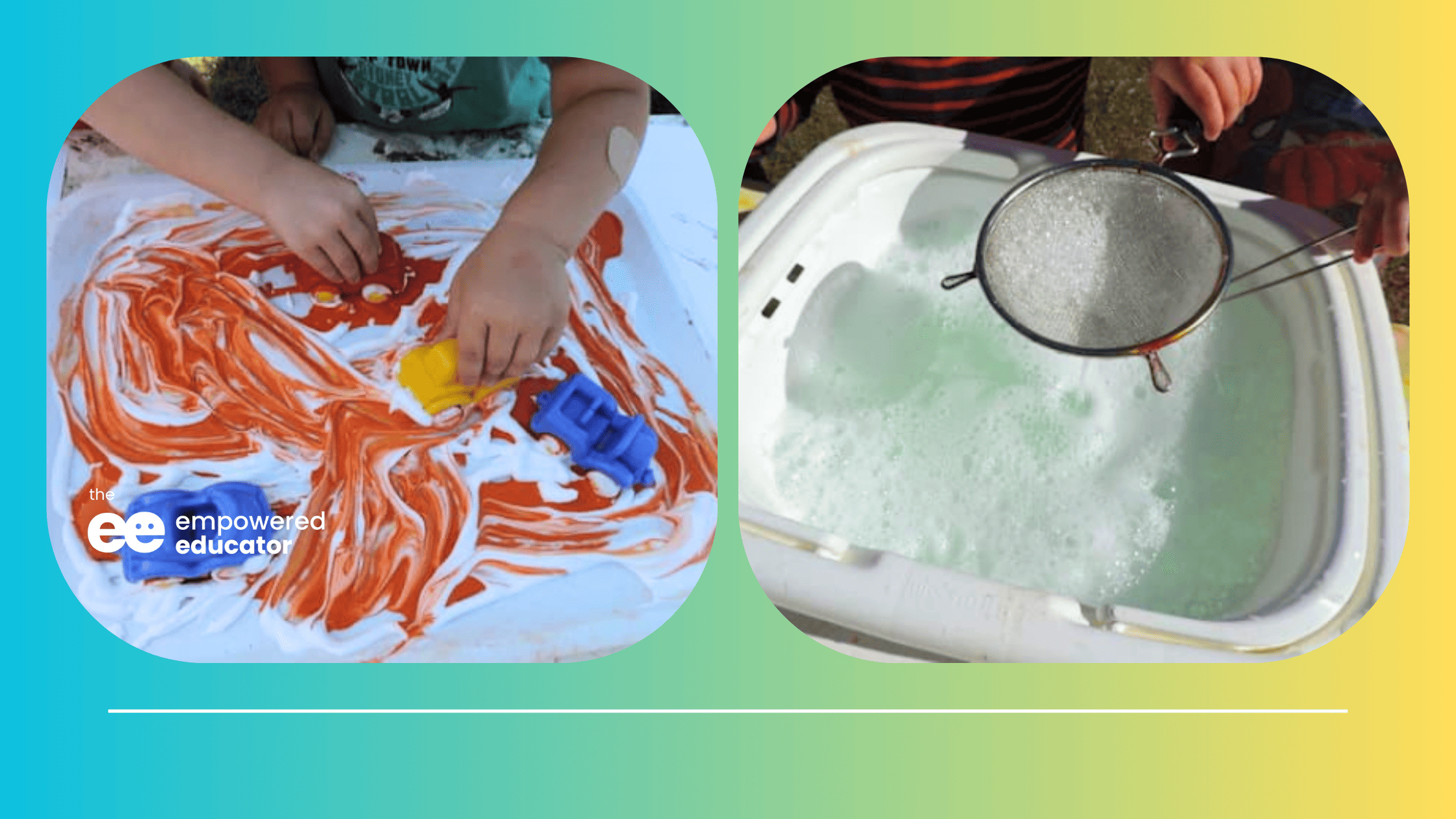
Positioning Schema
Children exhibiting a positioning schema show an interest in placing objects in specific arrangements. You may notice:
- Meticulously lining up toys like blocks or cars
- Organising materials by size, colour or other attributes
- Focusing intently on precise placements and patterns
- Getting upset if positions are changed or disrupted
Positioning play builds focus, order, classification skills and spatial understanding.
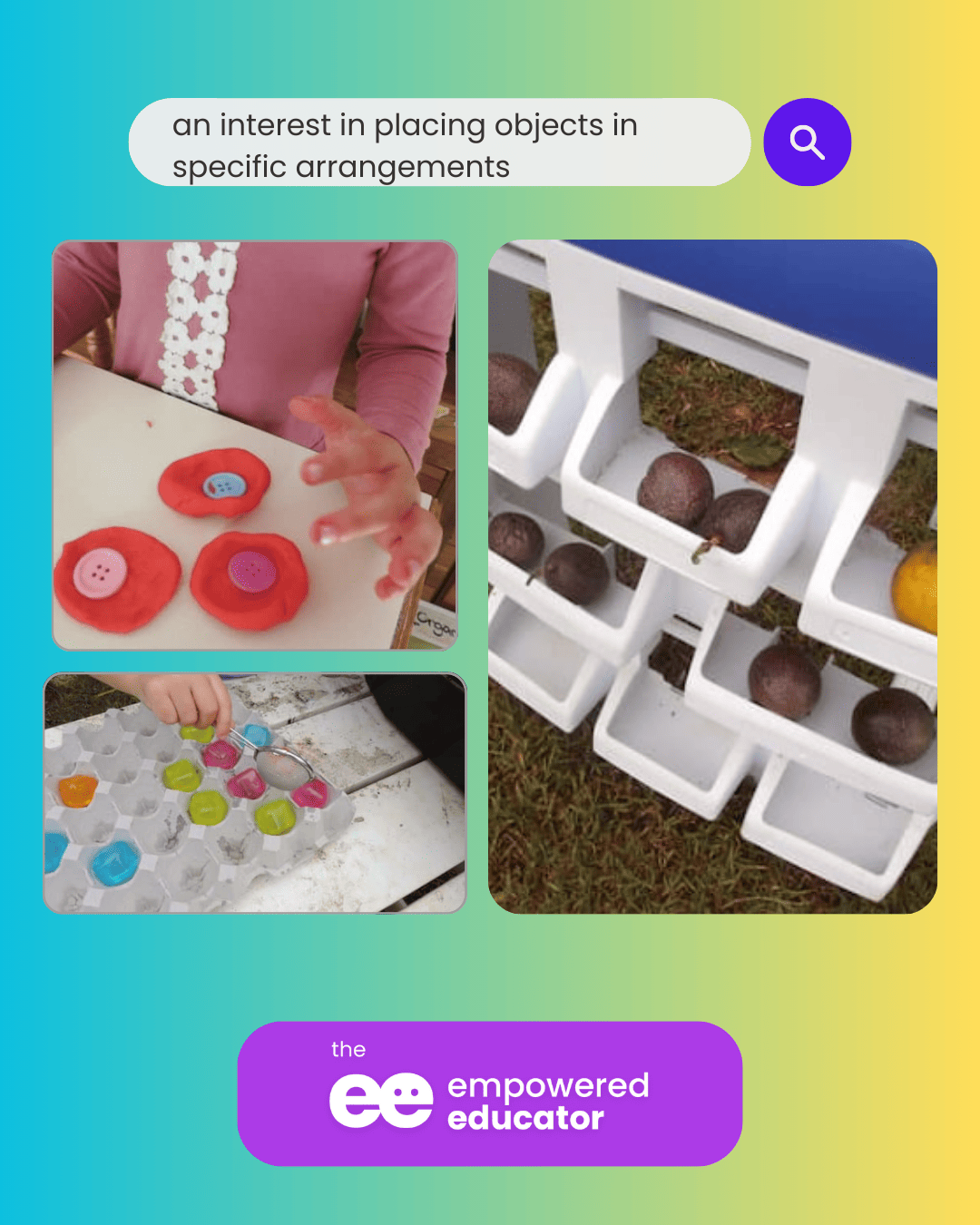
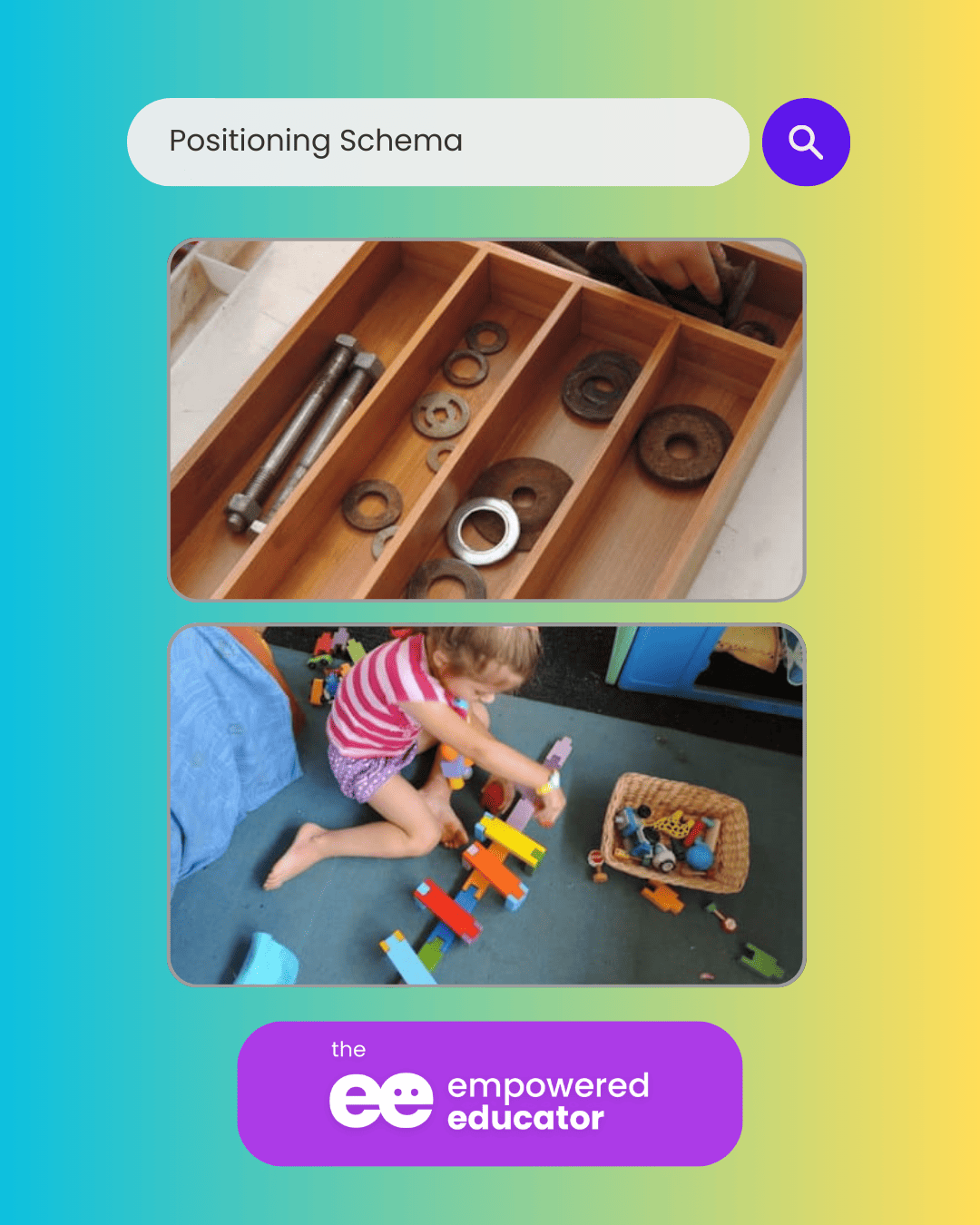
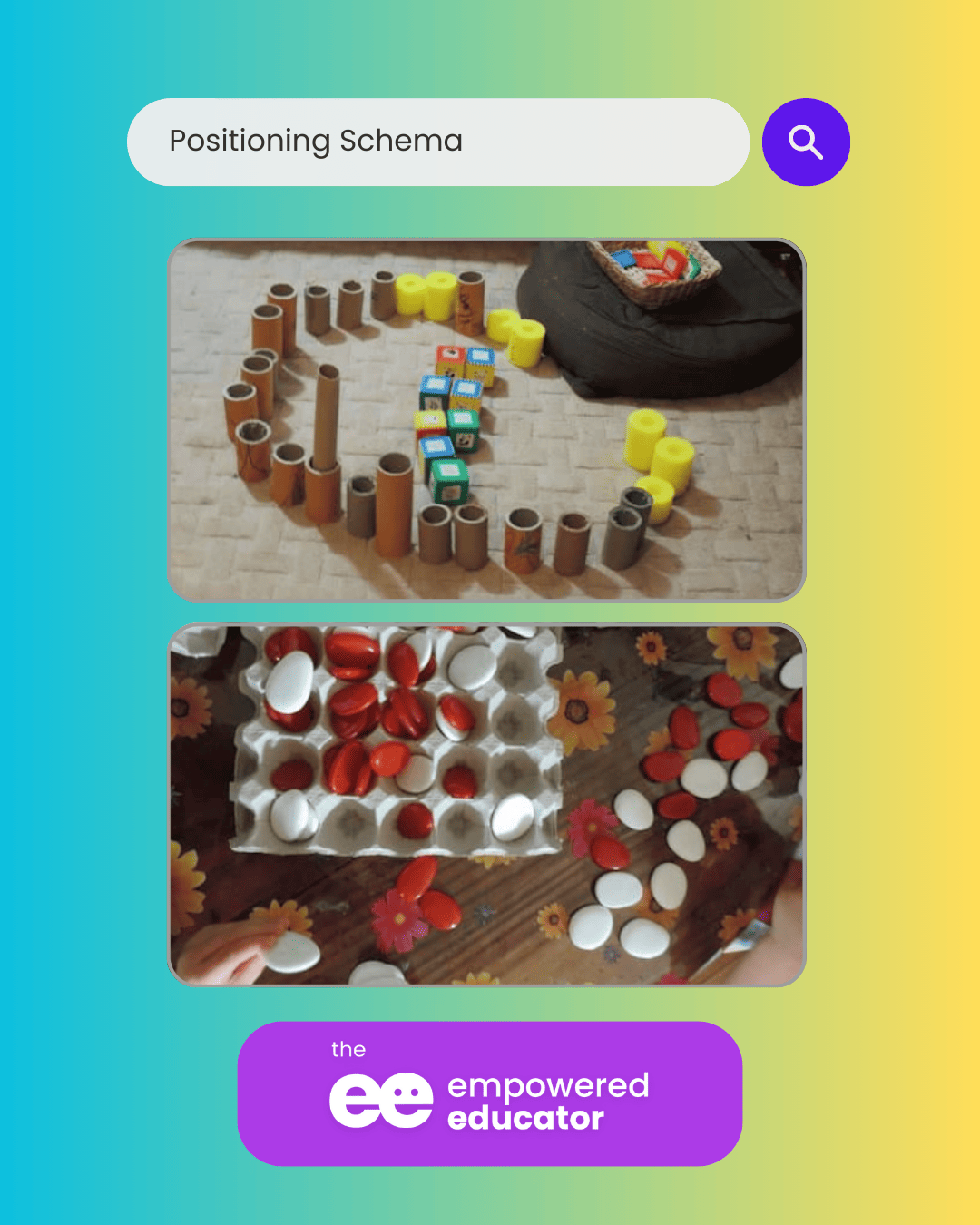
Transporting Schema
Children engaged in a transporting schema enjoy carrying objects from place to place. Look for:
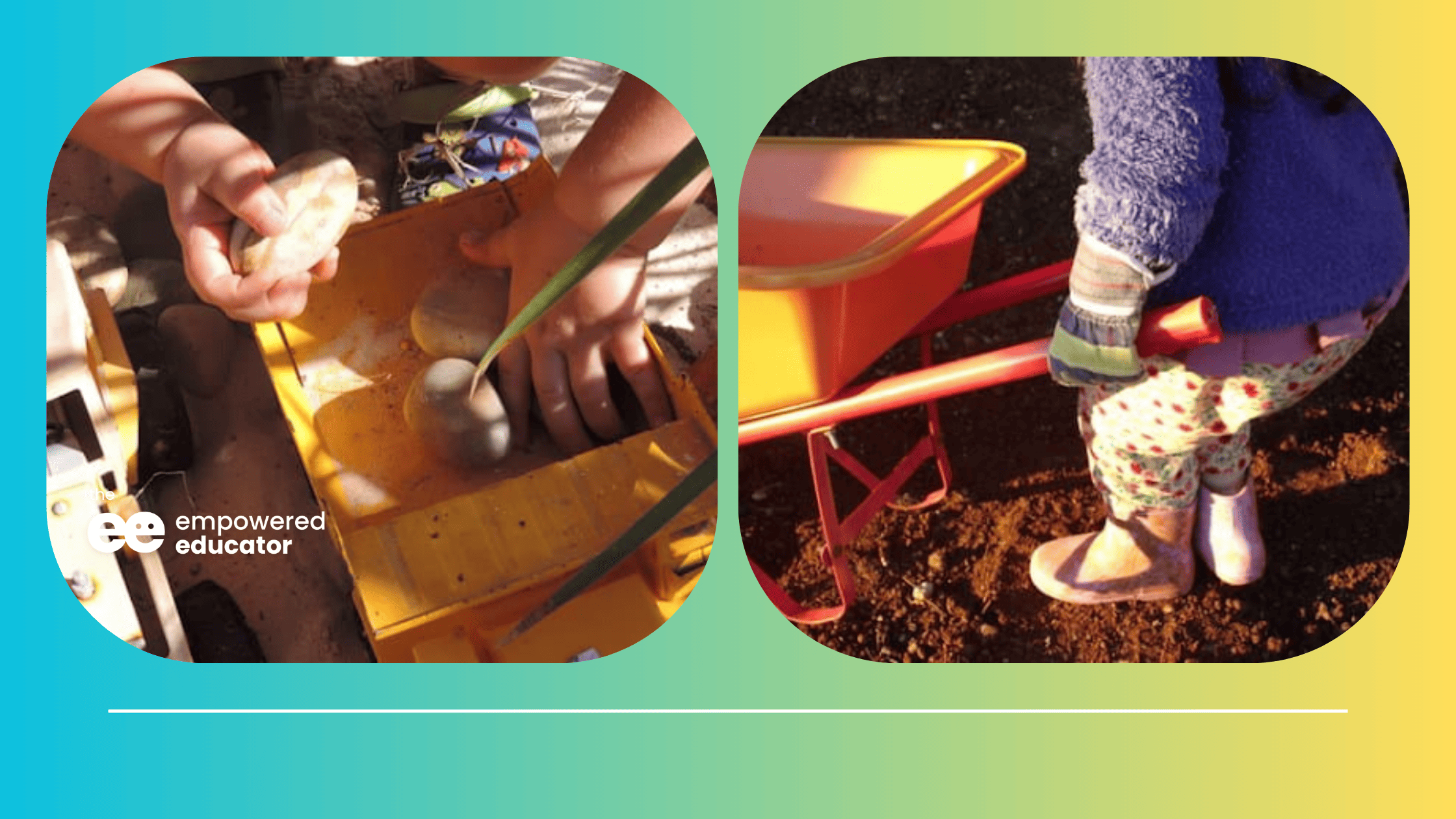
Transporting play allows exploration of motion, strengthens coordination and activates imagination.
Rotation Schema
Children displaying a rotation schema are fascinated with objects that turn, spin and roll. Watch them:
- Twirl themselves around until dizzy
- Spin wheels on cars, tops or bicycles
- Roll balls down ramps to observe motion
- Visually track moving/spinning stimuli
Rotational play builds understanding of physics, spatial orientation and pre-math concepts.
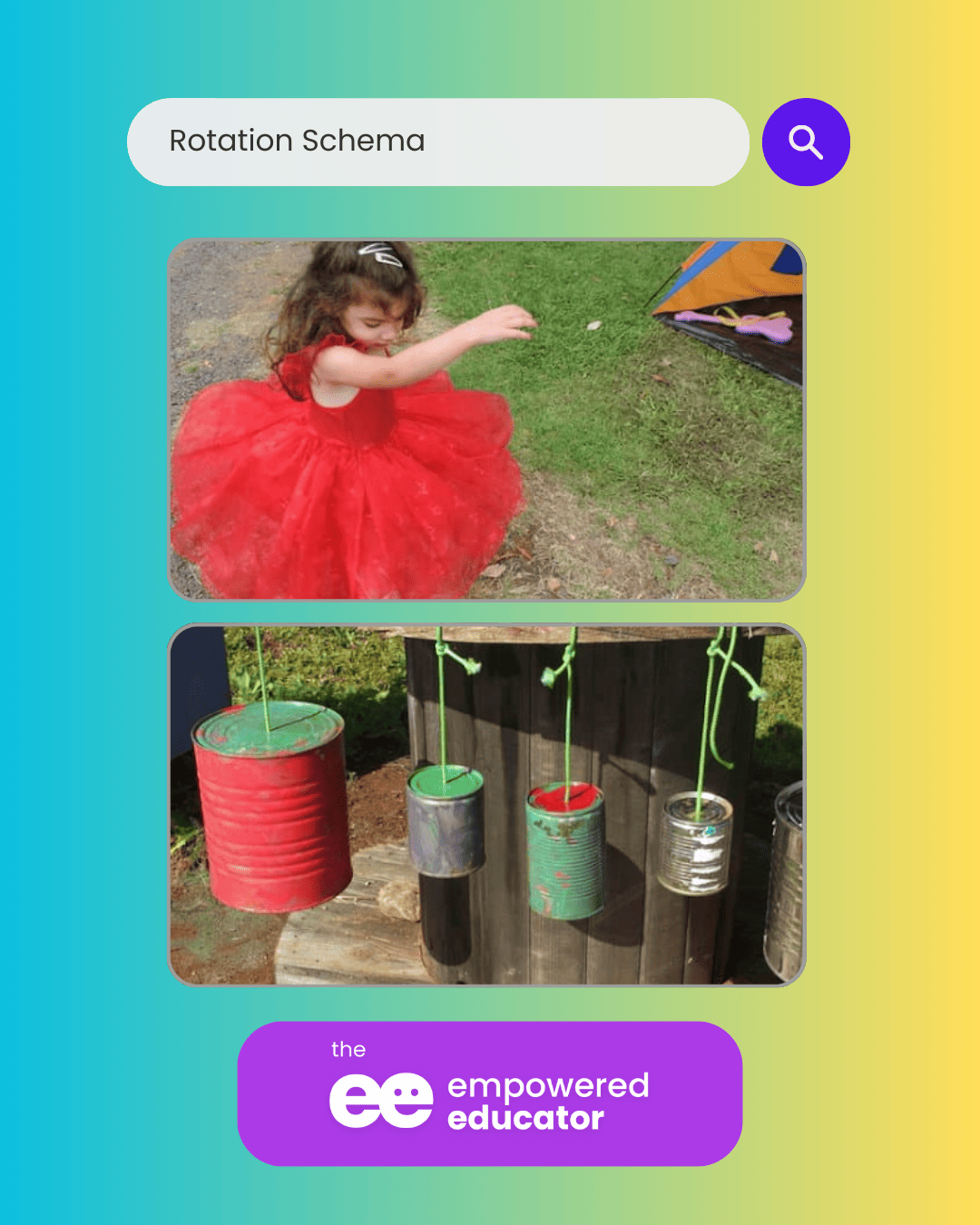
Connection Schema
Children exhibiting a connection schema gain interest in linking objects together or taking them apart. Notice:
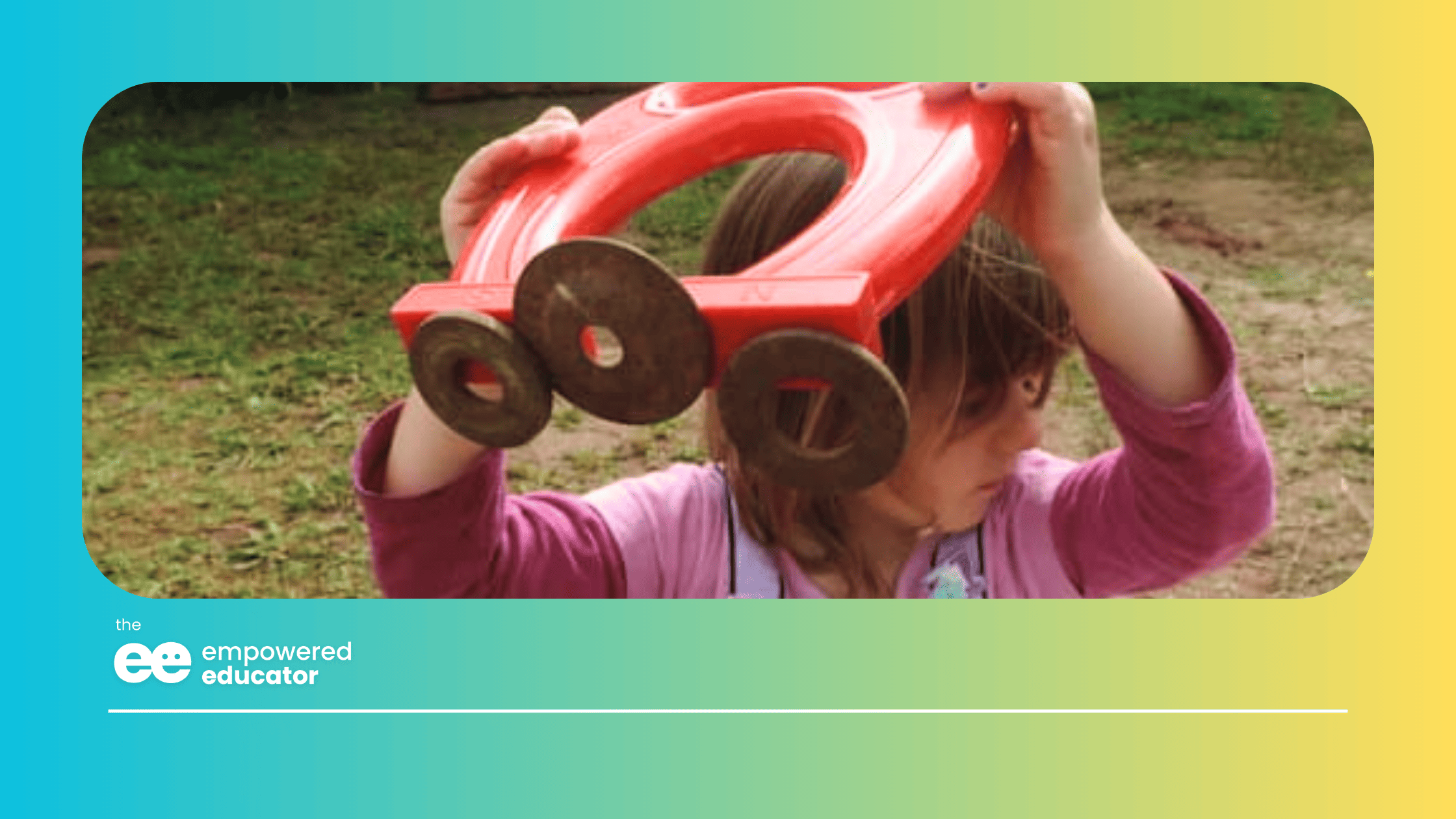
Connecting play develops fine motor skills, comprehension of part-whole relationships and curiosity.
Observing and Interpreting Schemas: A Guide to Meaningful Insights for Educators...
Understanding schemas begins with keen observation and interpretation so I've put together a roadmap to help you work your way through this process meaningfully.
Looking for Schema Patterns...
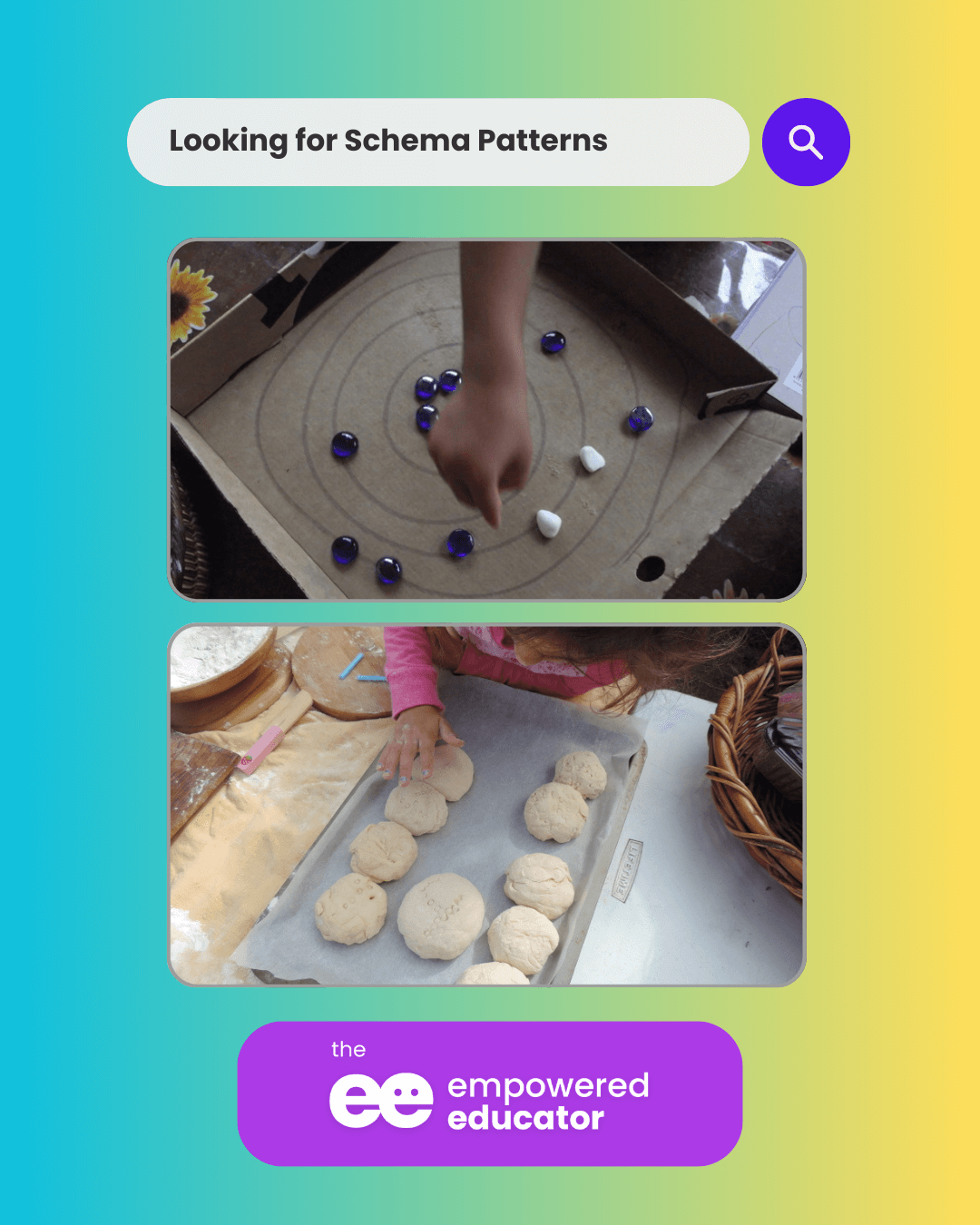
Interpreting Schema Patterns
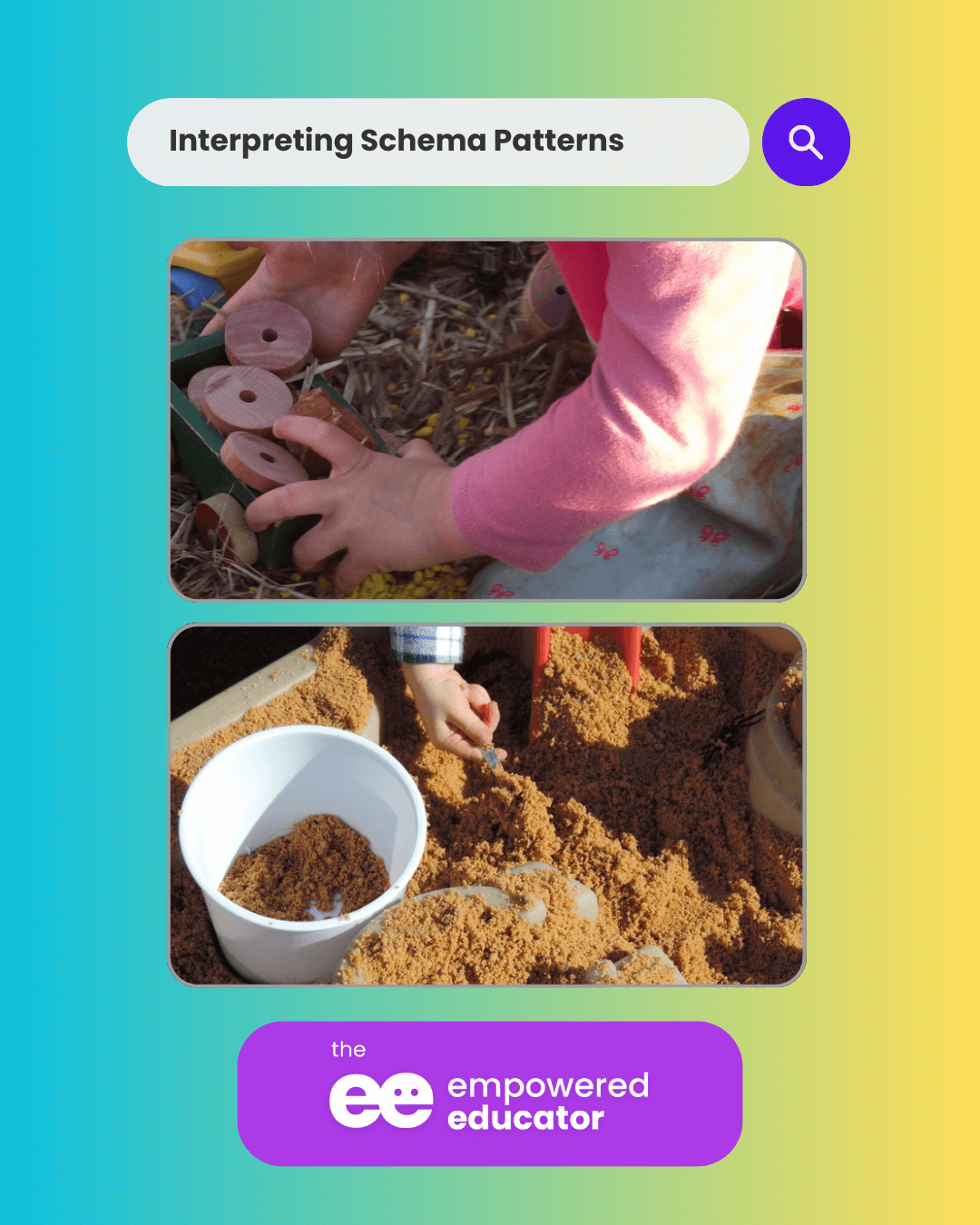
Supporting Schemas...
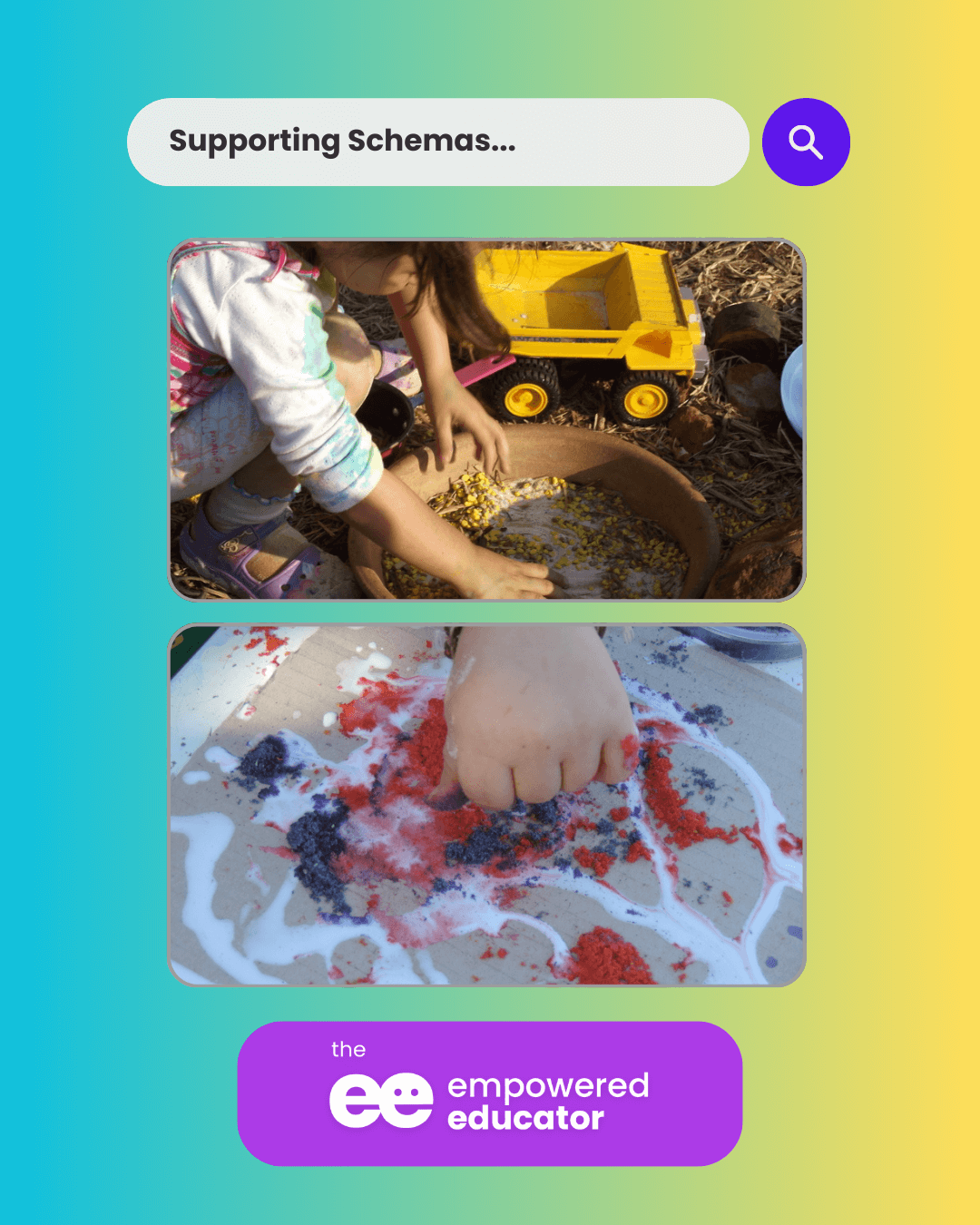
Schema Documentation Tips...
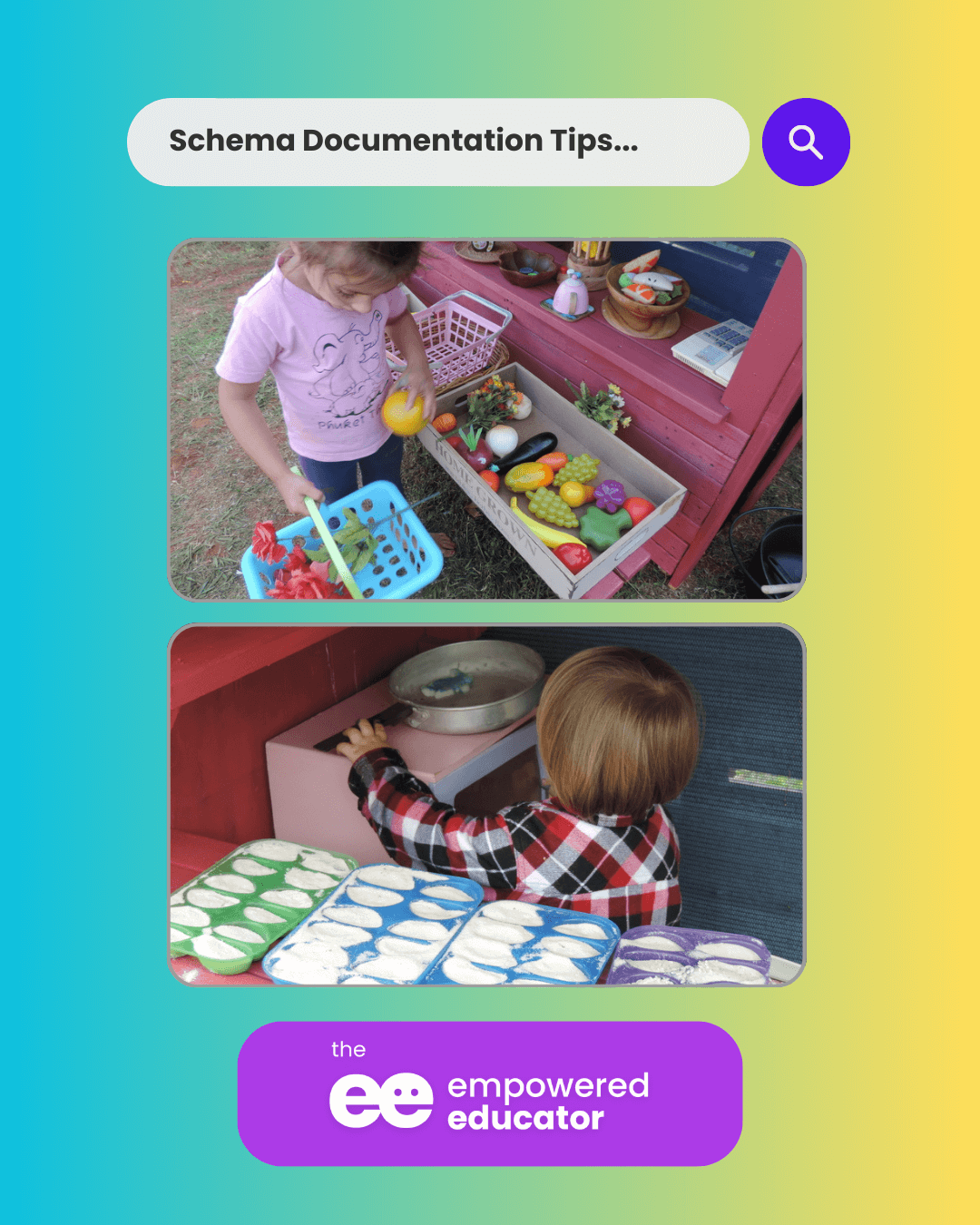
By now, you're probably realising that understanding and supporting play schemas can genuinely enrich your early education planning and practice. Recognising these patterns supports not just your documentation and planning but also makes the child's exploration of the world around them more meaningful.
But let's address the metaphorical 'elephant in the room' shall we—keeping up with all this observational work and planning is often overwhelming, especially when you're already swamped with other responsibilities. Wouldn't it be great if there was a simpler, yet effective way to navigate this?
Well, there is! In Part 2 of this series, I'll share with you how using AI tools like ChatGPT as an educational assistant can simplify and enrich your approach to understanding and supporting children's play schemas. Coming soon!

Not sure of your next step but want to start using AI tools like ChatGPT now?
I encourage you to keep learning about and exploring the power and possibilities of AI. Let ChatGPT complement your skills as an educator to build meaningful connections with children and take your planning and environment setup to the next level.
You do that by learning more about how to use AI in practical, ethical ways to make your planning easier but more meaningful - combining ChatGPT in partnership with your own expertise in child development and knowledge of the individual child’s strengths, needs and current interests.

I’ve made that easier for you with my 'AI Empowered Educators' membership where you can access a new workshop every month, step by step action guides, reflection tools , exclusive done for you prompts database, tips, tricks and the latest updates in AI and education - all specifically tailored for early childhood professionals.

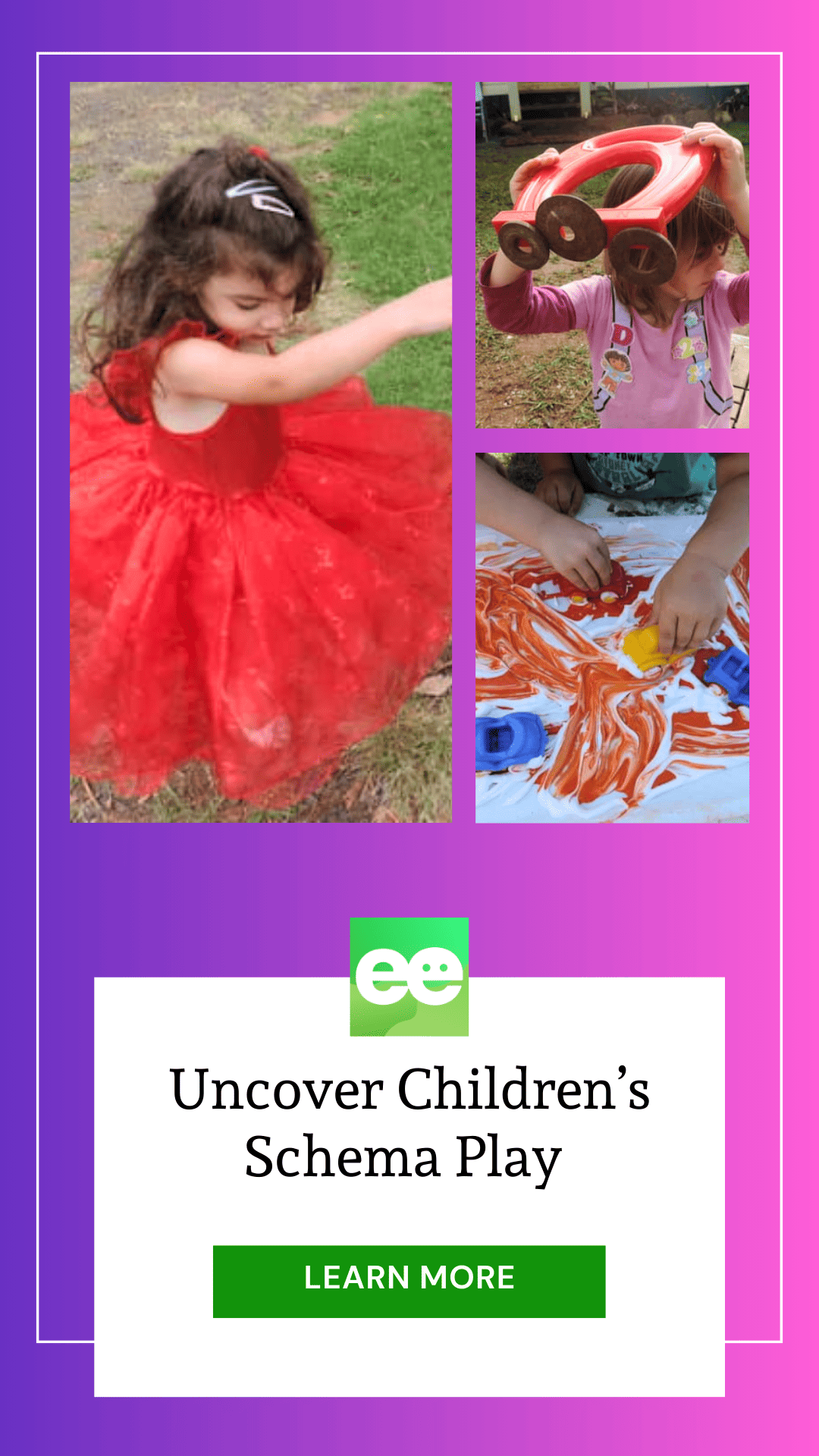
A Little About Me

Jodie Clarke is an early childhood professional supporting educators who want and need to stay passionate about the work they do! She has 30 years hands-on experience in the early childhood and human services sectors across many different roles.
Jodie is mum to 3 in Australia and has already helped thousands of educators with their work through her popular blog posts, activity ideas, online training and e-books.
Leave a Reply